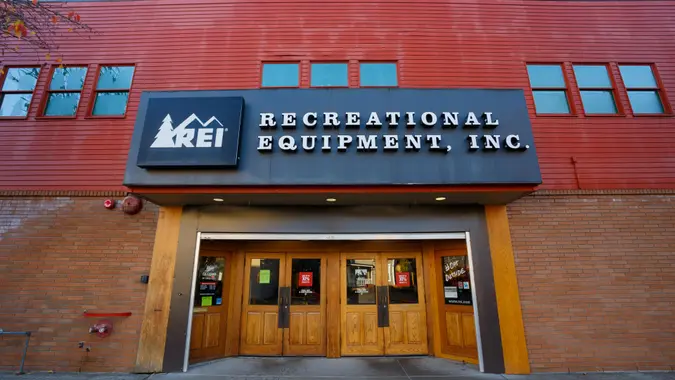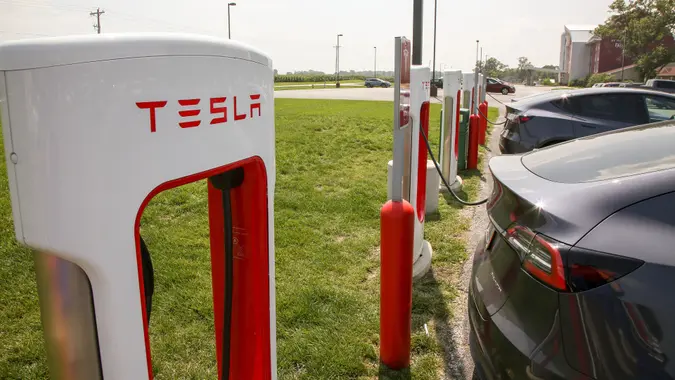5 Ways To Keep an Old Car Running for Decades

Commitment to Our Readers
GOBankingRates' editorial team is committed to bringing you unbiased reviews and information. We use data-driven methodologies to evaluate financial products and services - our reviews and ratings are not influenced by advertisers. You can read more about our editorial guidelines and our products and services review methodology.

20 Years
Helping You Live Richer

Reviewed
by Experts

Trusted by
Millions of Readers
Last month, S&P Global Mobility reported that the average age of passenger vehicles on U.S. roadways climbed to a record 12.6 years, as car owners held on to their vehicles longer amid low supplies of new vehicles and sky-high prices and interest rates.
“With average age growth, more vehicles are entering the prime range for aftermarket service, typically from 6 to 14 years of age,” said Todd Campau, aftermarket practice lead at S&P Global Mobility. “With more than 110 million vehicles in that sweet spot — reflecting nearly 38 percent of the fleet on the road — we expect continued growth in the volume of vehicles in that age range to rise to an estimated 40 percent through 2028.”
With average transaction prices of new cars holding steady at over $47,000 in March and with a first quarter 2024 average auto loan interest rate of 6.73% for new vehicles, per Experian, the motivation to keep vehicles running longer remains high.
For the average American driver, there are many ways to keep an old car running for decades. For those without the luxury of a bumper-to-bumper warranty, preventative maintenance is more important than ever to prevent potential concerns becoming more significant and expensive.
No car can run continuously without some assistance, but there are ways to prevent costly repairs. Here are five ways to keep an older car running for years past its prime.
1. Keep to Your Vehicle’s Maintenance Schedule
Although it might seem obvious, far too many car owners ignore or pay little attention to the recommended maintenance schedule found in their owner’s manual. For late model cars equipped with oil life monitoring devices that automatically indicate when an oil change is due, there’s no excuse for disregarding the routine maintenance schedule. As Edmunds noted, for those who own models with longer service intervals (up 20,000 miles or more), you won’t even have to go to the garage that often.
2. Regularly Check Fluids
We can assume that most drivers check their oil level and their windshield washer fluid occasionally. The same can’t be said for engine coolant, brake fluid, power steering fluid and radiator water. Keeping all of these fluids topped off and at the correct levels will guarantee that your automobile runs well and safely for a long time. You can prevent future maintenance by ensuring fluids don’t drop to dangerously low levels and most automotive fluids don’t require a mechanic.
3. Don’t Skimp on Wheels and Brakes
Since they are the one part of your car that is in direct contact with the road, your tires need to keep you safe even in the most hazardous driving situations. According to Centennial Leasing and Sales states, cheap tires can wear out more quickly or unevenly, which can cause suspension alignment issues and wear and strain on important parts of your car. It’s important that your tires be in great shape and for you to check their pressure every other week. The same holds true for interchangeable parts like brakes and rims. If you love your car and want it to last, get the best for a little more money. In the long run, it will probably save you money.
4. Change the Air Filter
There’s a strong possibility that the air filter on the majority of cars in North America has never been changed, or has been replaced on an irregular basis. Changing your air filter is easy, cheap and should be done once a year or every 12,000 miles. Maintaining a clean air filter is crucial for ensuring that engine gas burns correctly. Reduced gas mileage, engine backfiring and engine shutdown are all caused by dirty and clogged air filters. As far as cabin, oil and fuel filters are concerned, consider getting them replaced during your vehicle’s next routine service appointment.
5. Start Slow and Drive Easy
There should be little oil remaining on the moving parts of a cold engine, but that doesn’t mean you should gun the engine to warm it up. An engine can be sufficiently lubricated by the oil pump in a matter of seconds after starting up. If your car has been sitting for a long time, let it rest a bit after you start the engine, but you really should minimize forcing engine rpms around start-up time.
While you’re on the road, aggressive driving and shifting will take a toll on your car. Occasional heavy acceleration and braking is unavoidable, but purposely driving and braking fast puts stress on the whole vehicle. “The same easy-does-it attitude applies to shifting gears, too,” Edmunds detailed. Not only can you improve fuel economy by driving calmly, but you’ll save a ton of cash not having to replace any notoriously expensive transmission components.
 Written by
Written by  Edited by
Edited by 

























